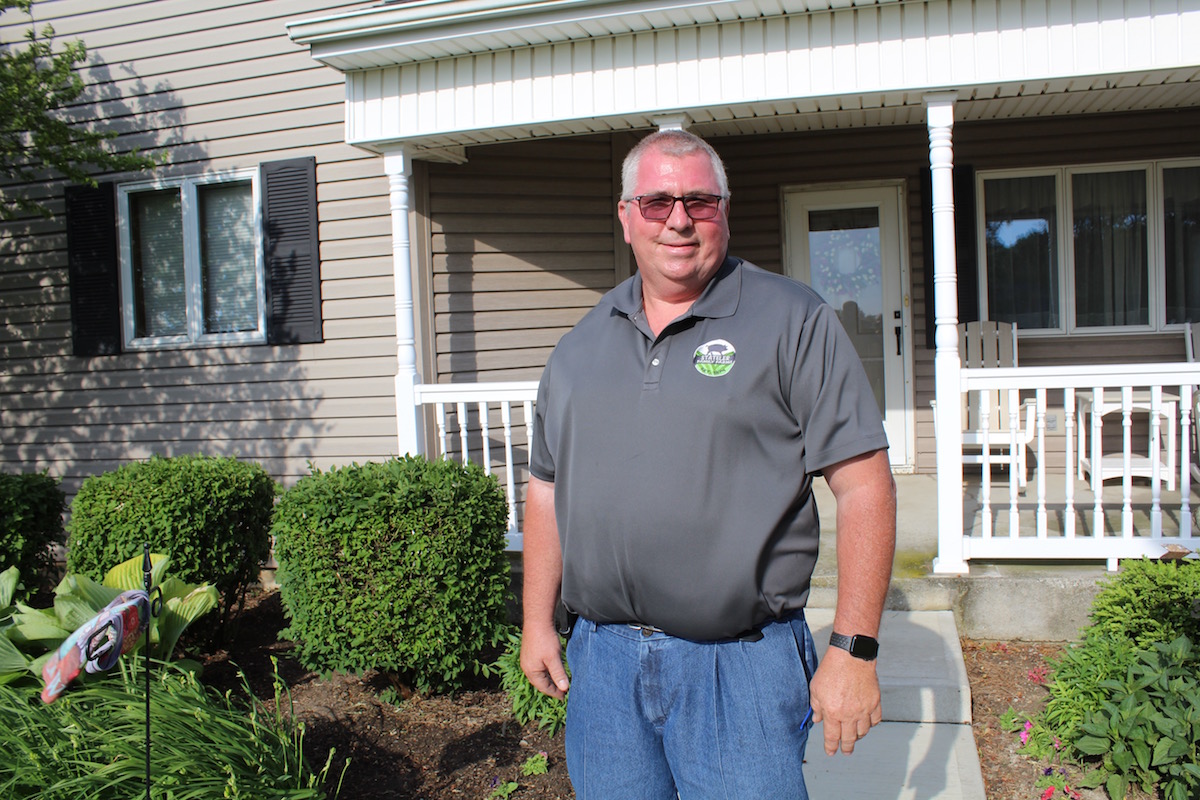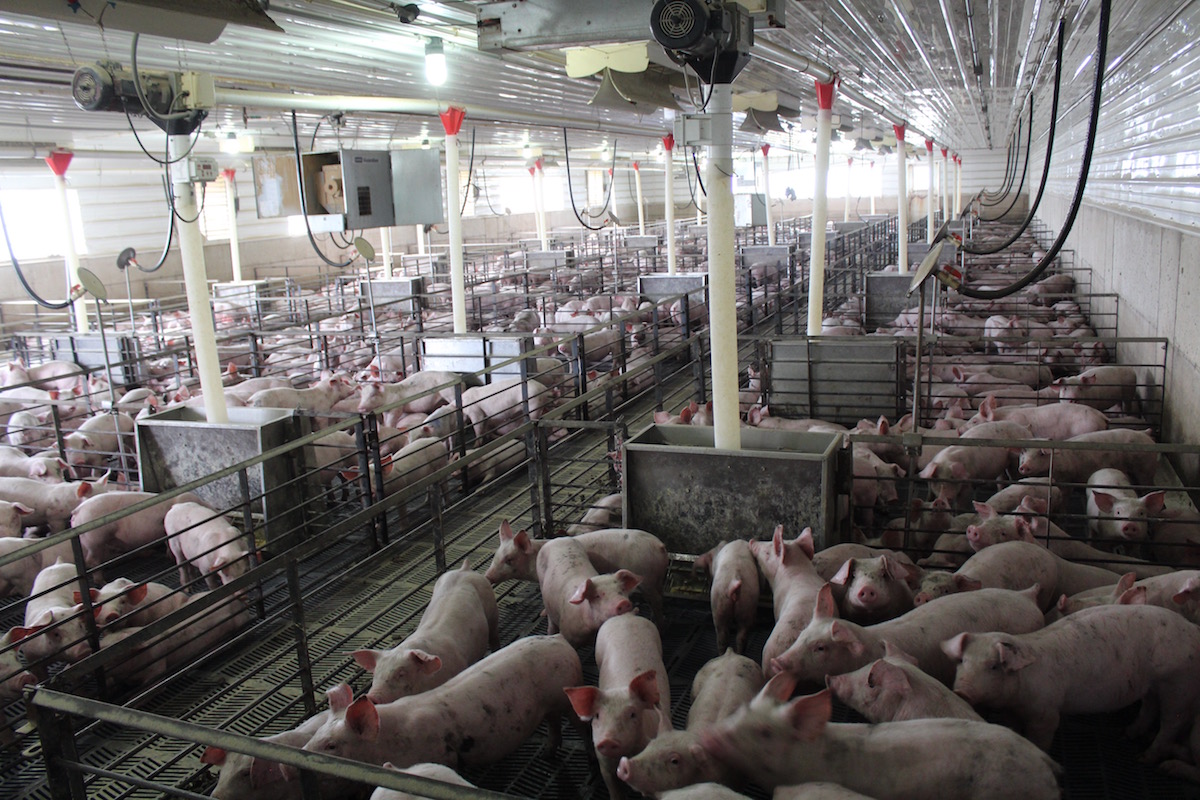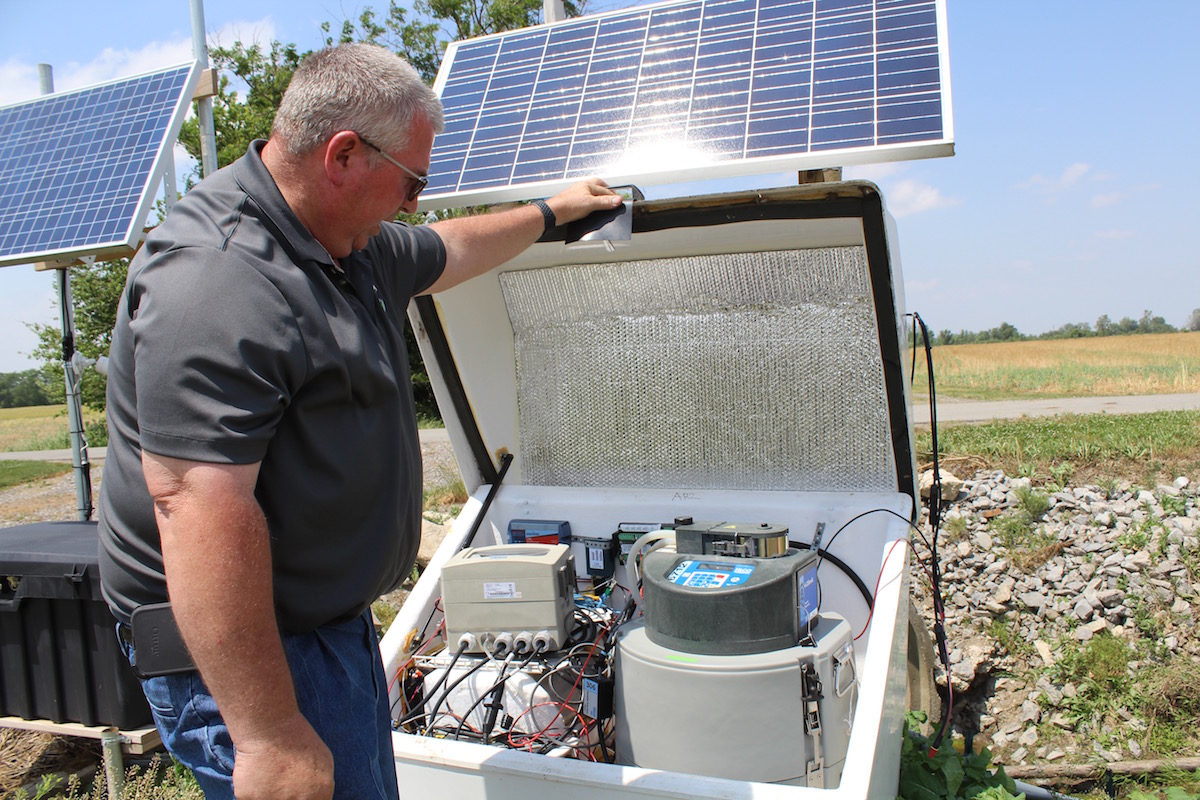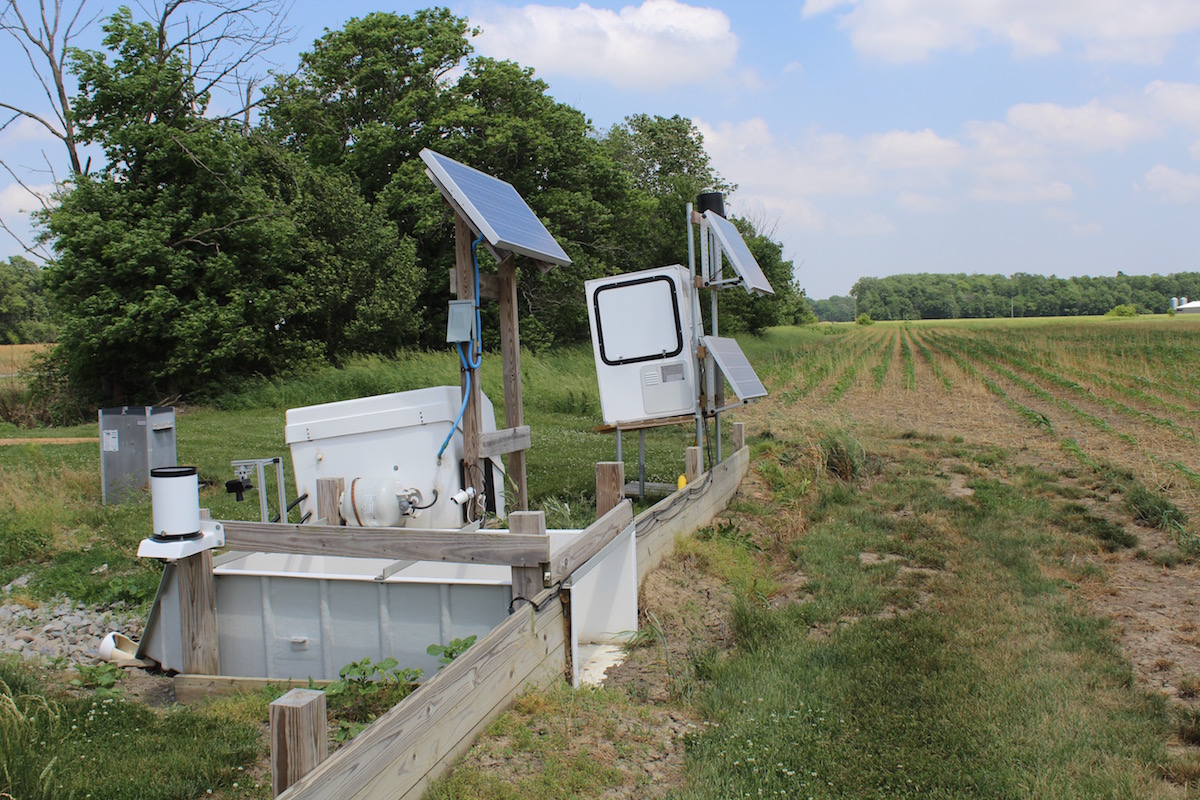MCCOMB, Ohio — A lot has changed during Duane Stateler’s time in the pork industry. The way you raise and house pigs. How fields are farmed.
Stateler had just come back home to take over the family farm from his father in January 1984. He had one young son and another on the way. Duane and his father were raising pigs farrow-to-finish and growing cash crops.
Back then, sows stayed on pasture during gestation, but pigs were raised in barns bedded with straw, while they were finished. It was labor-intensive and dirty work. They were looking to make a big expansion in order to stay competitive and support two families.
“We were in a place where we had to get bigger or get out,” he said. “But God had other plans for me.”
A sudden cancer diagnosis two months later pushed Stateler in a completely different direction. A lump near his armpit turned out to be a large tumor, chondrosarcoma, a type of bone and joint cancer. Stateler was 29 when he had the tumor and his right rotator cuff removed.
The cancer was gone, but so was his ability to do any heavy lifting with his right arm.
After that he couldn’t justify adding more pigs to their farm. He didn’t want to burden his family.
“I didn’t want the kids to be so tied to the farm. I wanted them to be able to play sports, do whatever they wanted,” he said. “1986 was the last year for pigs here.”
The pigs left, but they continued grain farming.
Fast forward almost 20 years to 2005. Stateler and his son Anthony just started raising pigs again, this time as contract growers for Hord Family Farms. They finish about 16,000 hogs a year, completely housed.
All the changes have been good, from Stateler’s perspective. The pigs and the soil are healthier for it. And the changes allowed him to get back into the industry.
“When we put the pigs in that barn, that was about as good a feeling as I’d had in a long time,” Stateler said. “I didn’t realize how much I’d missed it.”

Runnin’ down a dream
It was around 2002 when Stateler’s son, Anthony, expressed an interest in returning to the farm. Farming 600 acres for cash crops — like his father had done for years — wouldn’t be enough to provide for two families. They considered their options and did some research. Being a contract hog farmer was the way forward, Stateler said.
The Statelers provide the barns and the equipment. Hord provides the pigs, the feed and the veterinary care. The Statelers raise the pigs and keep the manure.
Pat Hord, president and chief executive officer of Hord Family Farms, said being contract growers can be a way for people to get into the industry. When they look at bringing on potential partners, a lack of experience is not a turnoff.
“If we have someone that really wants to do it and is really engaged and it’s a part of their goals, we’ve found those people to be successful,”
Managers with Hord Family Farms train contractors and check in with the farms regularly — ideally at least once a week.
Weaned pigs come into the Statelers’ nursery when they are 21 days old, weighing on average 12 pounds.
They’ll stay there for 40 days. The pigs are about 50-60 pounds when they leave the nursery for the finishing barns. Some will stay on the Stateler farm. About a third of them will be finished by another Hord contractor.
The pigs will be at the Stateler farm for 155 days until they reach their slaughter weight of nearly 300 pounds.
Then, they’ll get on a truck and take a 9 1/2 hour drive to the Clemens Food Group plant, in Hatfield, Pennsylvania. Clemens produces the Hatfield brand.

Get back
The Statelers’ pigs are raised in biosecure barns. You can’t just waltz in for a visit.
“It seems like we’re being secretive. We’re not,” Stateler said. “The environment that the pig is in today is so much better than what it was 30, 40 years ago.”
In the ’80s, Duane’s sows were on pasture during gestation. Pigs were in barns bedded in straw to be finished. He farrowed 2,000 pigs and bought in about 1,000 feeder pigs as well.
“I’m always the first to admit that we probably overused antibiotics in that time,” he said. “Because of the way we were raising pigs in straw bedding, we always had bacteria.”
It was muddy. They had to regularly deworm the pigs. It was hot. Pigs didn’t put on weight as well in the summer months.
“There was only three months out of the year that the pig was comfortable the way we used to do it,” he said. “That’s how everyone was raising them back then.”
Now? The barns never get above 85 degrees, Stateler said. Misters kick on when the heat rises. There are fans running, circulating the air.
In the winter, it never gets below 65 degrees. The pigs’ waste leaves the pen almost immediately through slats in the floor that drop it into a pit below. The pigs are content, Stateler said. They eat well.
With the biosecurity measures, they don’t have to worry as much about outside viruses, bacteria or parasites sneaking in on someone’s boot treads. Keeping animals healthy saves them money.
“Every time you have to treat a pig with any kind of antibiotic, that’s going to cost you upwards of a dollar to a dollar and a half,” Stateler said.”You do not have a profit margin if you have to treat a pig.”
Money talks
For as much as the industry has changed from independent farmers marketing their own pigs to large integrators using contract farmers, some things have stayed the same, like the price margin per pig.
“We’re still getting paid the same price per pig as we were 30 or 40 years ago,” he said.
The five year average of what a farm makes per pig is about $5-6. Some years, it might be $20 a pig. Other times, like earlier this year, it might be negative $40.
“We’re not the ones setting the price,” he said. “We go on what the world will pay for [pork]. What the demand is.”
Americans spent an average of 9.5% of their disposable income on food in 2019, according to the U.S. Department of Agriculture Economic Research Service. In 1960, about 17% of income was spent on food. Compared with other countries, Americans spend a lot less of their income on food.
Modern highly-efficient agriculture made food cost less in the U.S. People got used to it. They don’t want to pay more for commodity foods, like meat, eggs and cheese.
Now, even as the price of other things go up, like the cost of equipment, feed and fertilizer, the price the farmer is getting has stayed pretty much the same. Farmers continued to become more efficient to make that small margin count.
When people question the ethics of raising animals in confinement, Duane Stateler has a simple response.
“What are you willing to pay?”
Do you want to pay a premium for modern pasture-raised pork sold directly from small farmers? Or do you want to buy your meat at the grocery store for a more affordable price?
It’s not a matter of good or bad. It’s a matter of having options.
Until more people are willing to pay more for pork raised in a different manner, the current system will remain.
A recent study by Pasa Sustainable Agriculture estimated that about 5% of hogs are raised and finished on pasture in the U.S. Scaling up pastured pork production would require a lot more land and for farmers to become a lot more efficient.
“We have a good number of producers in Ohio that are small, that are doing the niche market. We need those producers. They’re filling a need,” Stateler said. “But it’s a small number of the population that is willing to pay that price.”

We can work it out
Farming in Hancock County has changed in the past few years, thanks to its place within the Western Lake Erie Basin. There are restrictions now, by the Ohio Department of Agriculture, on when and how manure could be applied.
That’s because animal agriculture bears the brunt of the blame for the harmful algal blooms in Lake Erie.
The blooms are largely caused by nutrient runoff from land. Phosphorus influences the size of the bloom, while nitrogen influences the toxicity.
To show that they were doing things right, or to fix what they were doing wrong, the Statelers’ farm is one of three farms that joined the Blanchard River Demonstration Farms Network program in 2016.
The network is a partnership between the U.S. Department of Agriculture Natural Resources Conservation Services and the Ohio Farm Bureau Federation. The goal is to test conservation practices to reduce phosphorus and sediment runoff.
“We took a chance, put a target on our backs,” Stateler said.
Edge-of-field monitoring equipment was placed in two areas of the farm to collect data on what was leaving the field and entering waterways.
The Statelers put 243 acres into the program. They were already doing a three-year rotation of corn, soybean and wheat in some parts of the farm and have used cover crops since 2008. They started subsurface and variable rate application of manure in 2018.
This is the fourth cropping season data has been collected from the farm, said Aaron Heilers, project manager for the network. The first three years were to get a baseline and work with the Stateler’s crop rotation. This year was the first time they changed farming practices — they’re spreading manure on growing crops — to see what impact that has on water quality.
But the baseline numbers still show something interesting. Much of the phosphorus put on the fields is staying there. Edge of field monitoring shows only about one pound per acre loss, Heilers said.

“That’s something. Putting out 100 pounds of phosphorus and losing a small amount, that is doing it the right way,” he said. “You’re trying to put it below the ground to meet crop demand.”
The results are encouraging, Stateler said. “Every pound we save today is a pound less we have to worry about in the future,” he said.
Stateler wants a future for farms like his. Raising hogs as a contractor allowed him to get back into raising pork. He hopes that focusing on conservation practices will help the entire industry.
He has some grandchildren that are interested in getting into agriculture. Maybe this can be a way forward for them too.
(Reporter Rachel Wagoner can be contacted at 800-837-3419 or rachel@farmanddairy.com.)












